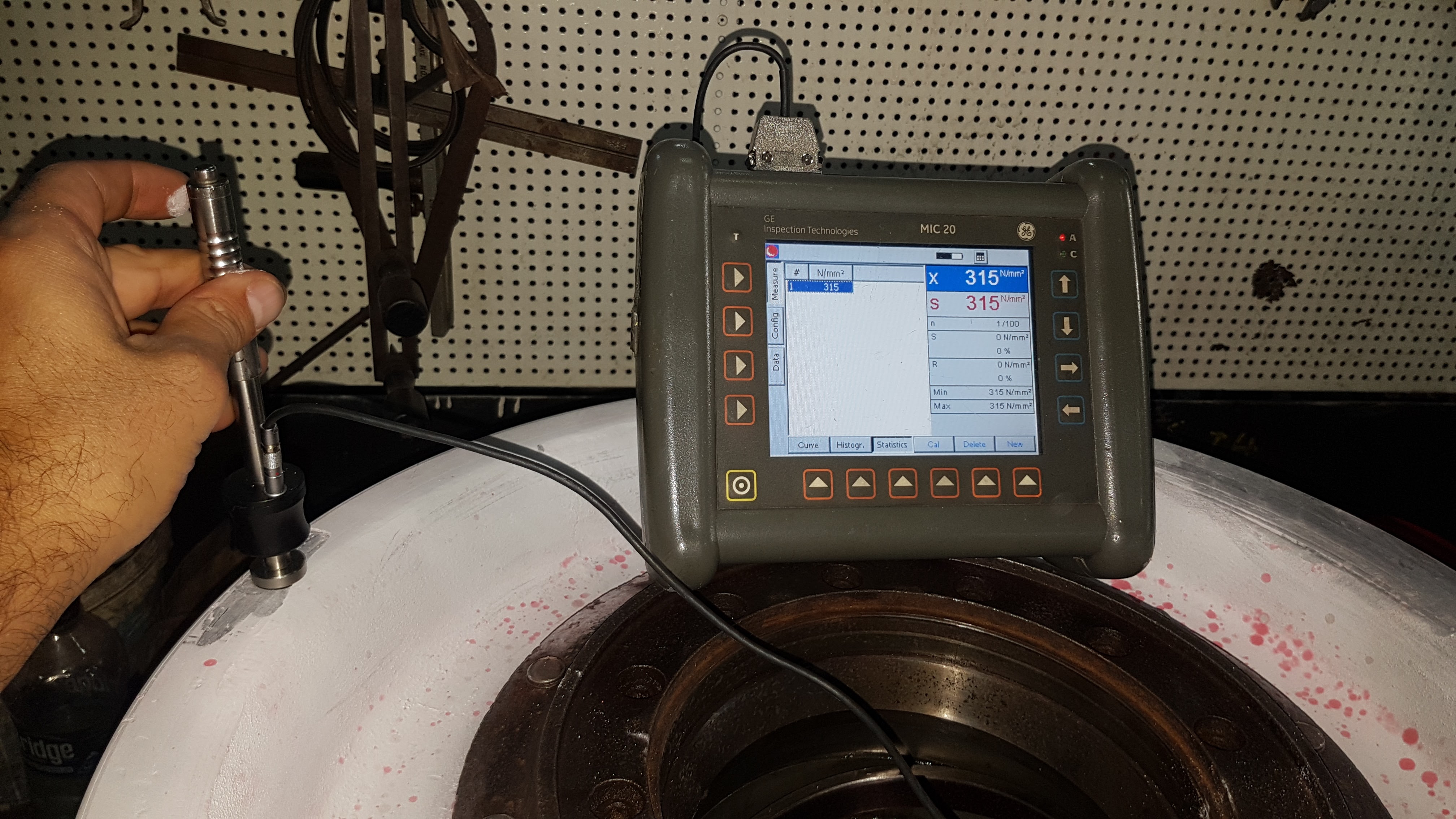Hardness testing in the field is performed by special portable instruments working on various principles. The two most typically used are rebound testing and UCI testing.
The rebound technique is based on measuring the drop and rebound velocity of a small diameter ball hitting the test sample. This method is also called the Leeb’s method and is performed according to ASTM A956.

The UCI method (Ultrasonic Contact Impedance) is based on the shift in resonant ultrasonic frequency arising from the contact of a Vickers diamond indenter on the end of the probe and the material under test. The frequency shift is produced from the additional mass on the end of the probe during the contact with the test material. The frequency shift is proportional to the contact area of indentation generated by the Vickers diamond.

A guide for the suitability of the two portable hardness testing methods.
| Method/Application | Rebound testing | UCI testing |
|---|---|---|
| Steel and Aluminium cast alloys | Very well suited | Sometimes suited |
| Solid parts | Very well suited | Well suited |
| Coarse grain materials | Very well suited | Not recommended |
| HAZ regions in welds | Not recommended | Very well suited |
| Tubes, wall thickness <20mm | Not recommended | Very well suited |
| Tubes, wall thickness >20mm | Very well suited | Very well suited |


